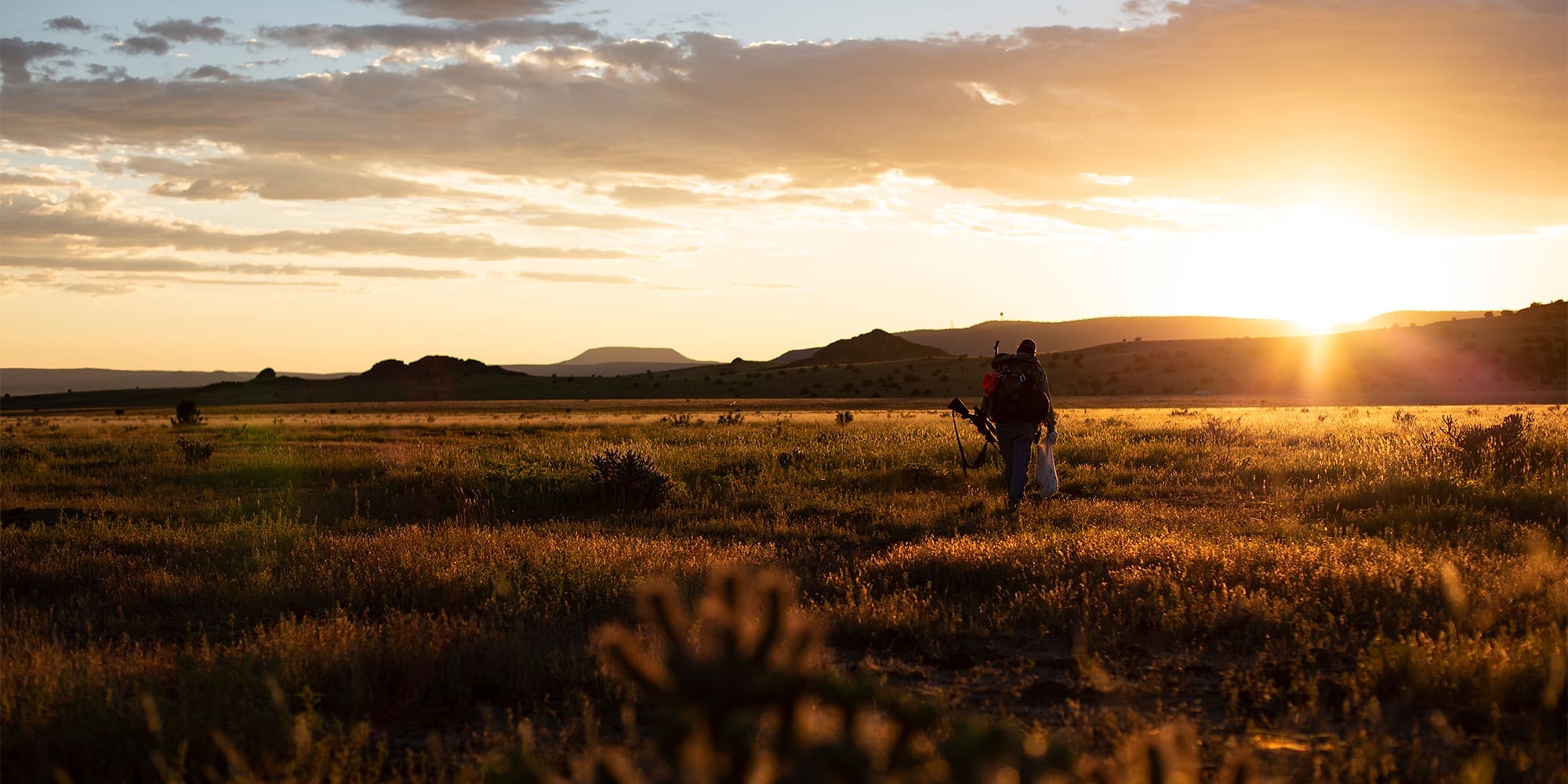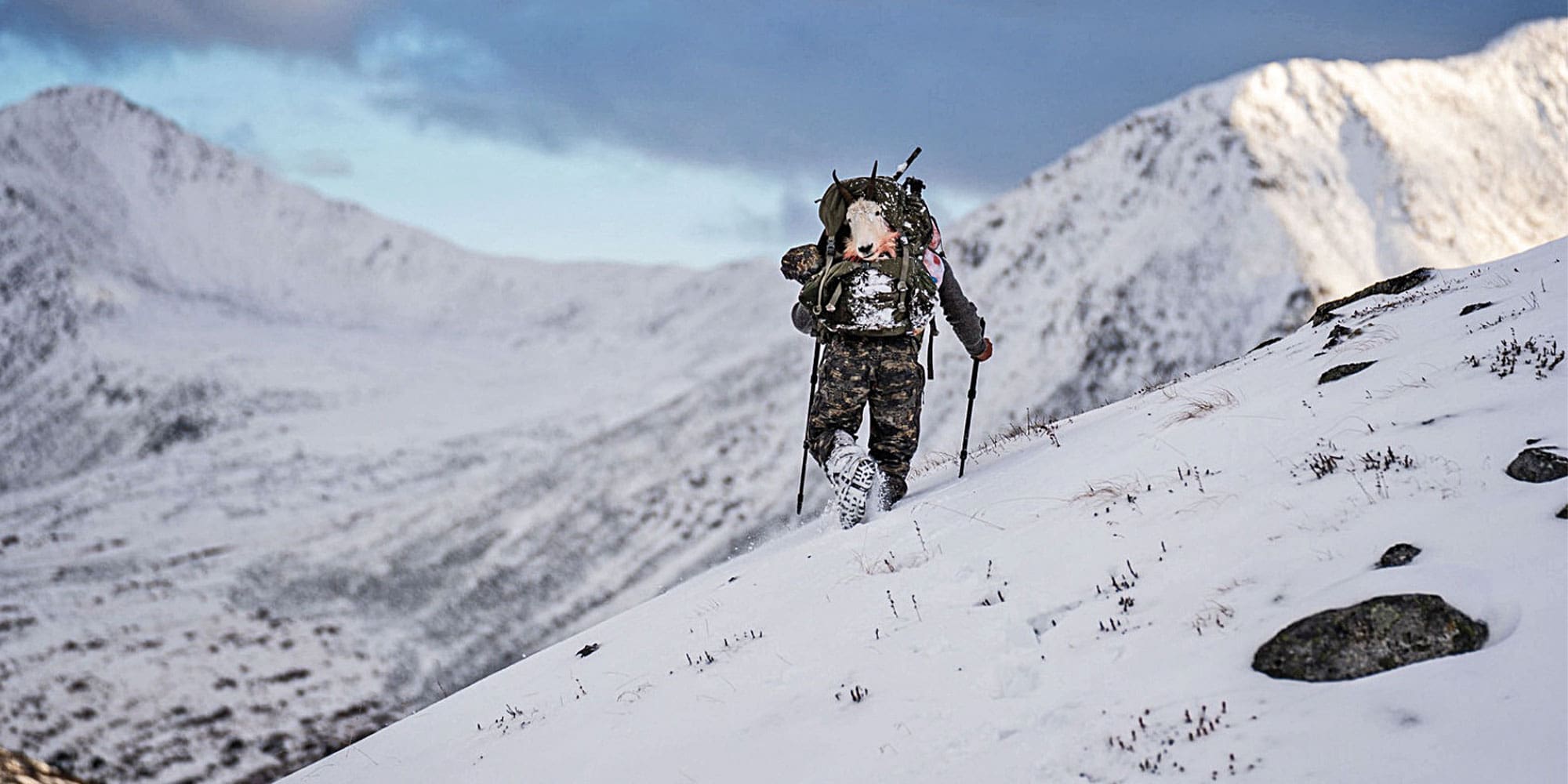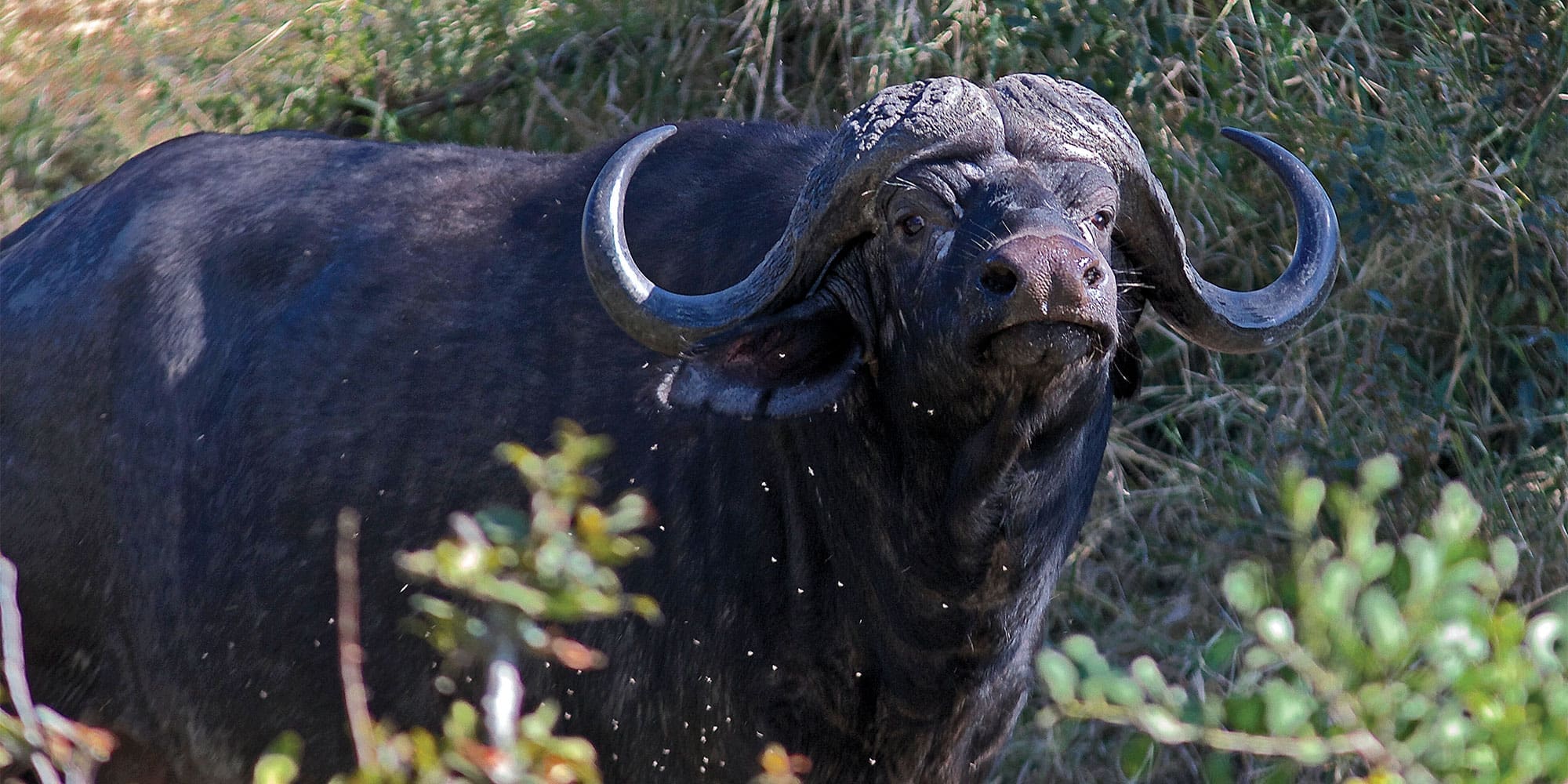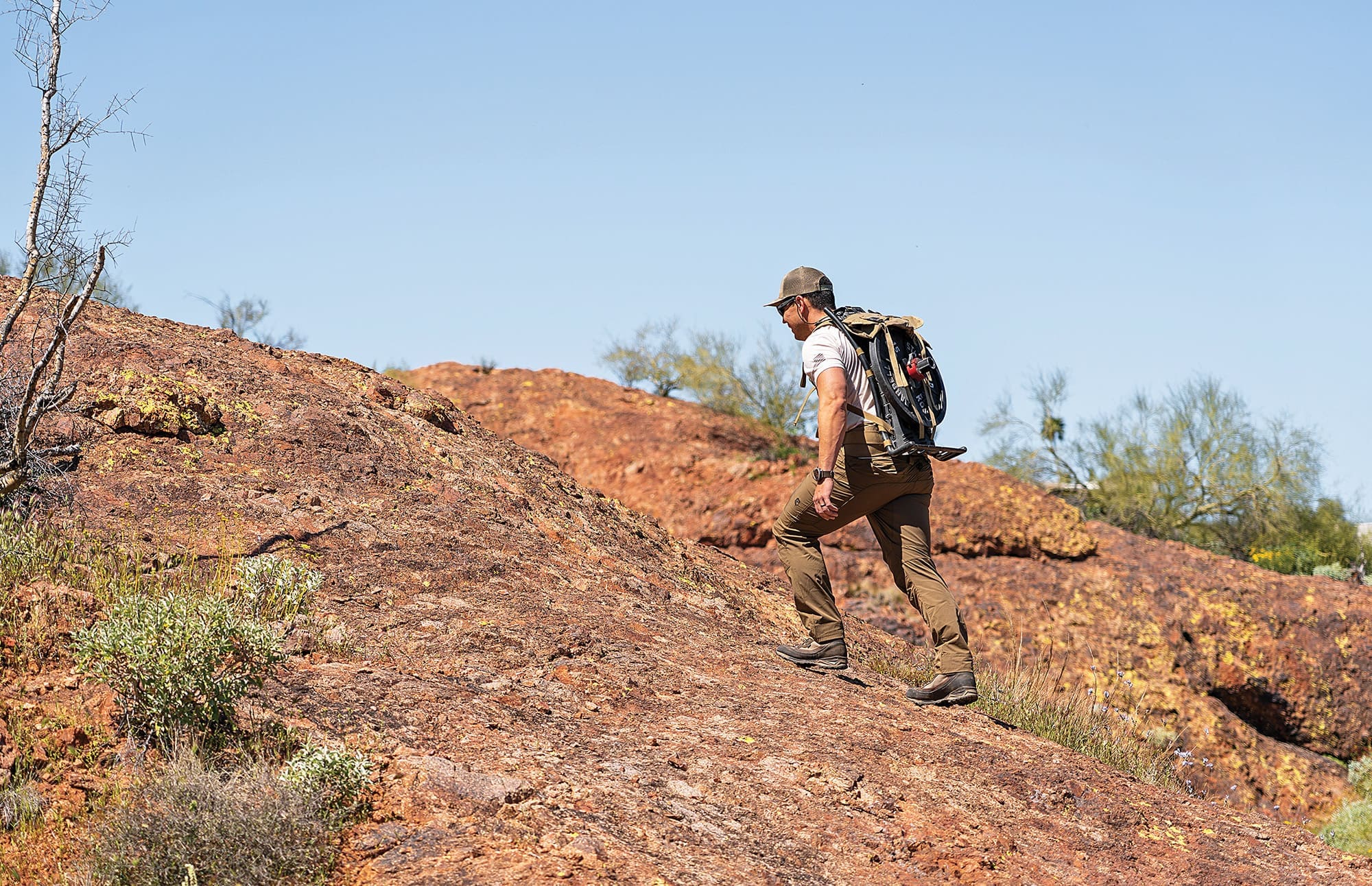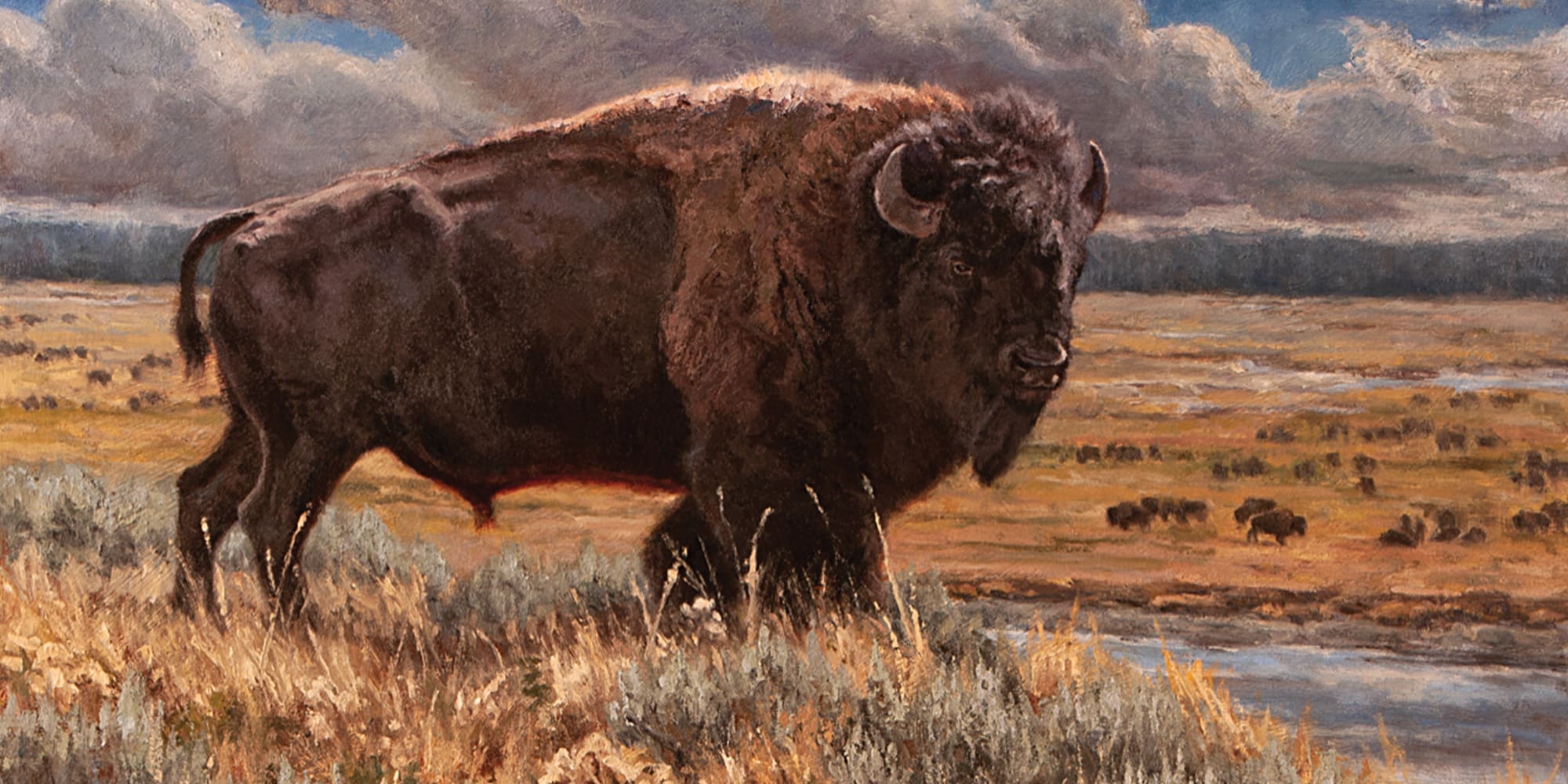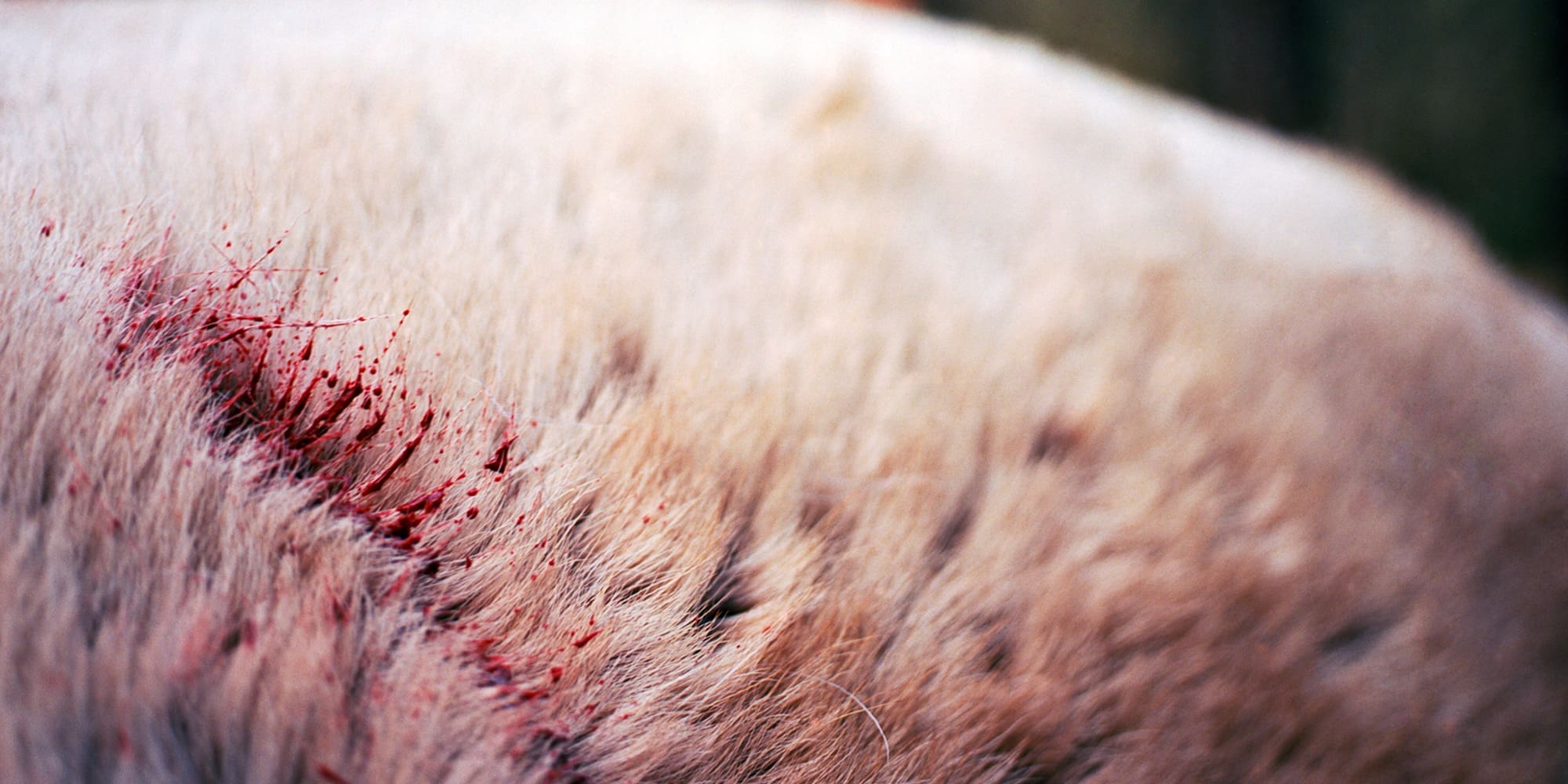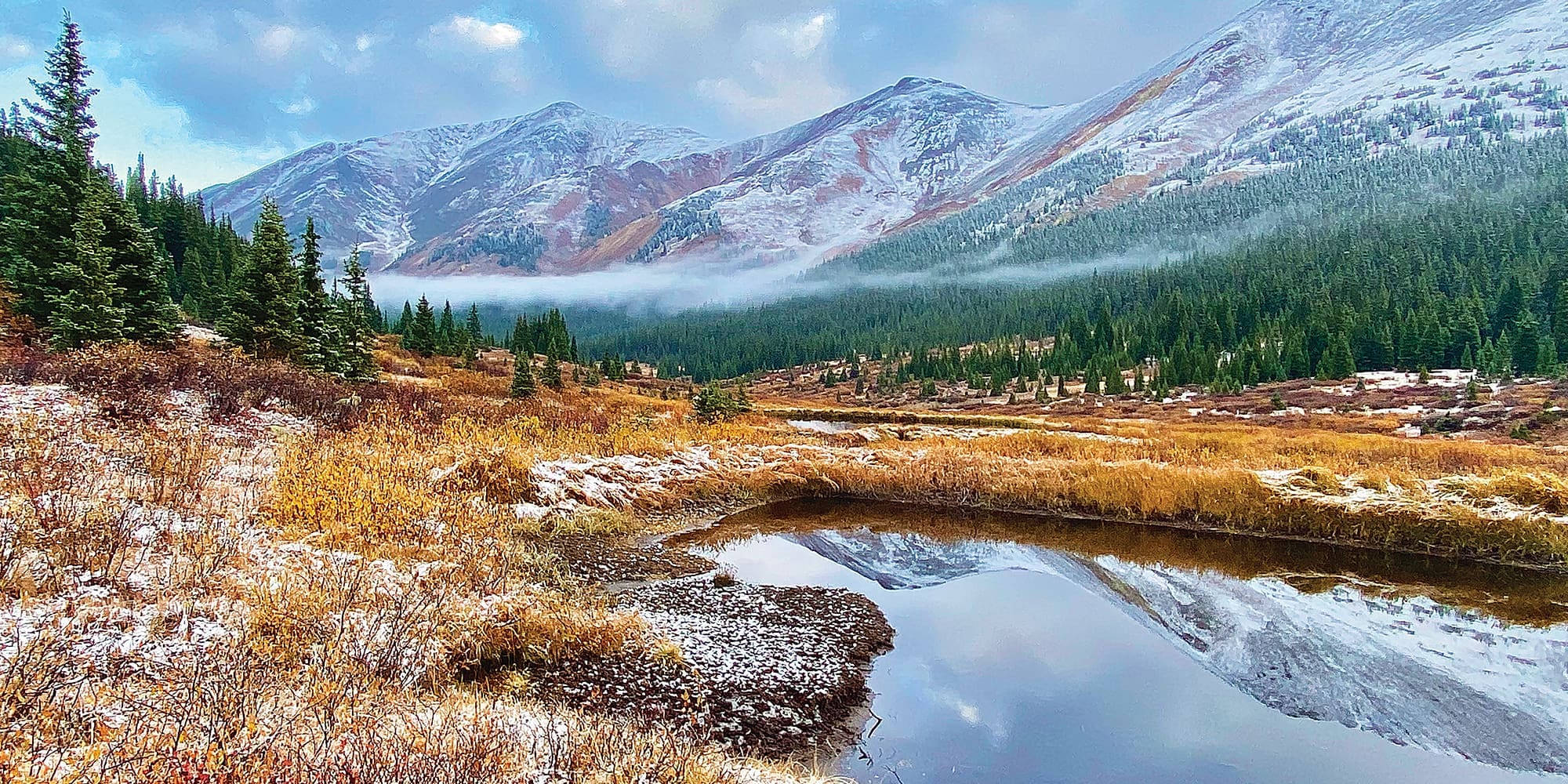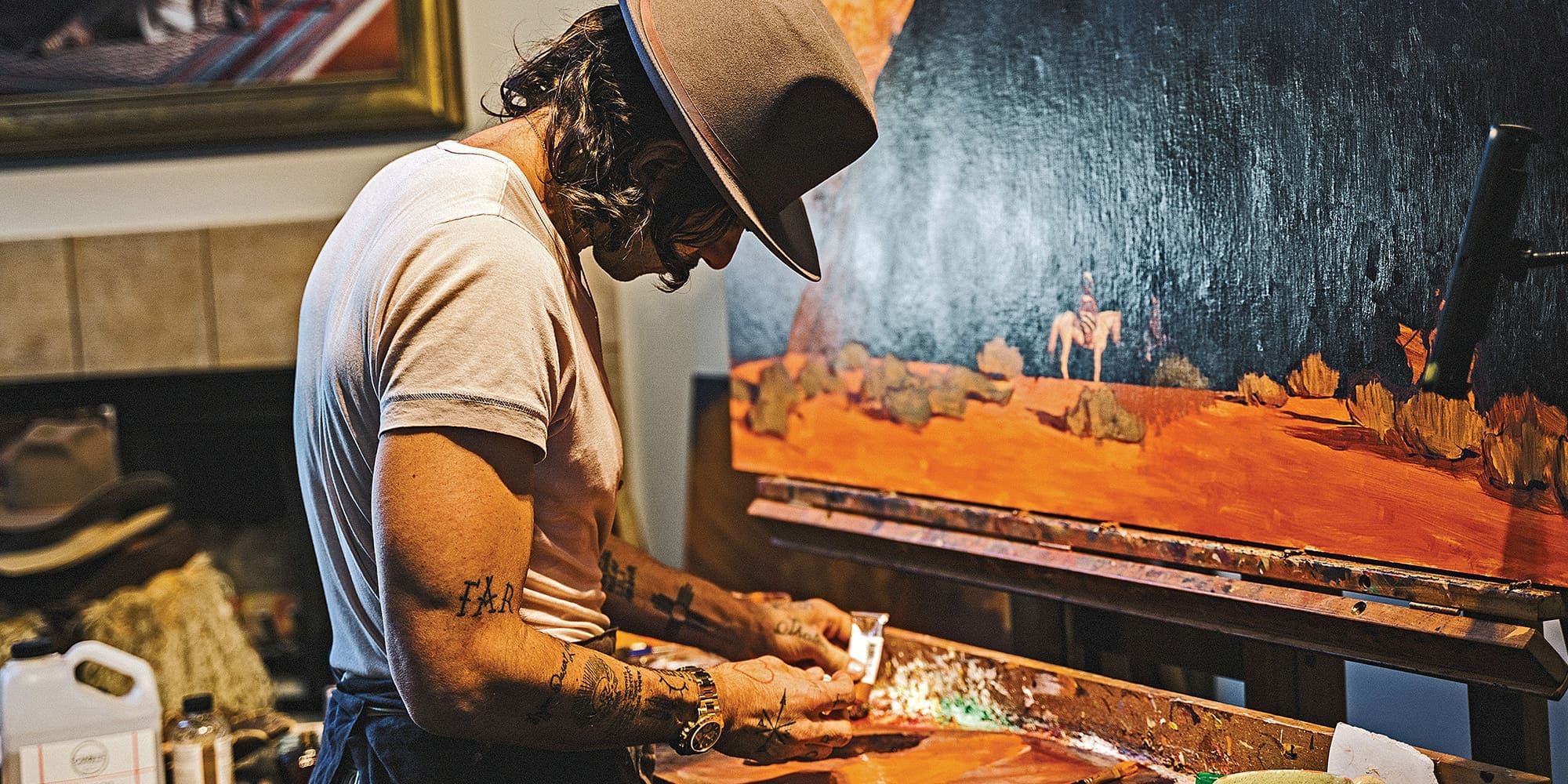
NOTICE: Certain links on this post may earn a commission for Western Hunter Magazine from Amazon or our other affiliate partners when you make a purchase. Thank you for your support.
Shared Use of the Backcountry: Best Practices
In Part 1 of this article, I shared some examples of interactions I had with an outfitter while hunting in the Clearwater National Forest some 20 years ago. In this issue, I’ll review current situations and outline some “best practices” the DIY hunting horseman can use to avoid conflicts with outfitters who may be operating in the area you may choose to hunt.
Outfitters are like any other businessperson in that they need to run a profitable operation in order to support their families and live the life they’ve chosen. The best backcountry outfitters run a good “outfit.” They have quality stock, good equipment, quality guides, and provide a high-quality service to their clients. Usually, they operate in areas where the game animals they seek are abundant enough to attract clients year after year. These outfitters run good enough operations that the occasional DIY hunter in their area doesn’t interfere with their business.
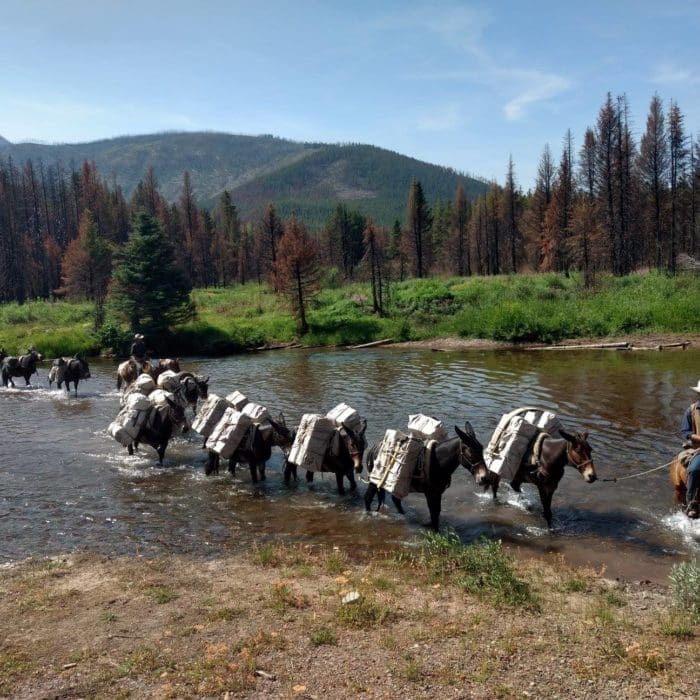
Mutual Respect
If you’re a DIY hunting horseman who chooses to hunt in an area with an outfitter, it’s important to keep in mind that the outfitter has the same “right” to hunt public land as you do. It's definitely a two-way street requiring courtesy and respect from both outfitter and DIY hunters to make it work. As a DIY hunter, I give the outfitter and his clients the same respect that I expect from them. If the feelings are mutual, everybody can be happy and have quality experiences.
As along as the respect is mutual, all is well. When one or both parties abandons this basic principle, the train goes off the tracks.
A few years ago, I was hunting in Montana and was at the trailhead picking up a load of hay to pack into my camp. As I was organizing my packs, a truck and trailer pulled up. A couple of guys got out, unloaded some really good-looking mules and began organizing their gear. I was curious about them, as I hadn’t seen them there before, so when I had my stock and gear ready to load, I went over to say hello. It was obvious that they weren’t beginners and in a short time they had their packs organized and ready to go.
Since we were going the same direction, they invited me to trail along behind them, which I did. When we got to the top of the mountain, we stopped, tied off, and took a short break before going separate ways. I commented on how well behaved their mules were and the guy who owned the outfit said, “Yeah, I’m an outfitter’s worst nightmare. I can go anywhere they go and outhunt their dudes any day of the week.”
I had just met these guys, but right away knew they weren’t my “type.” Obviously, this guy had no intention of showing any respect to any outfitter. I can only imagine the conflicts he must have gotten into over the years with that attitude.
On the other hand, an outfitter who doesn’t share the mutual respect principle can be a “worst nightmare” for the DIY hunter. I’ve encountered this situation every fall where I hunt in the Idaho backcountry. My hunting partner began hunting this area 20-plus years ago with no conflict with the outfitter.
The area is on the border of two hunting units with different season dates and the outfitter had moved out of his camp before we arrived, so we never saw his guides or clients. This area is extremely dry, especially at higher elevations where the most strategic campsites are located. As a result, water determines where you camp with stock.
The first year that I hunted this area, we got our bulls after a couple days and decided to use an alternate route to the main trailhead, keeping an eye out for a water source in an area where we had found no hunting pressure and lots of good bulls. I had spent a lot of time on Google Earth all winter long looking for a side draw off the main ridge that might have a water source. Sure enough, we found a spring in a great strategic location for a camp.

The next fall we relocated our camp to that site and it was all that we thought it could be: a great strategic location and lots of good bulls. However, it was at the top end of where the outfitter had been hunting, and before long, conflict was in the air.
We were careful to not interfere with the outfitter’s guides or clients, and in a normal year, we’d be in camp a couple days, get our bulls, and be gone. We thought it was fair that we hunt the area a few days and then leave the area to the outfitter for the remainder of the season.
However, that wasn’t “good enough”. Thus, for the past decade of us hunting this area, nearly every morning the outfitter sends two guides with four clients three miles up the ridge from his base camp, past our camp, and arriving out on the ridge where we are hunting just before shooting hours. The guides are usually young guys, just out of guide school and definitely have a “bone to pick” with us. We try to avoid them, but often they come right in on top of us with their clients, disrupting our hunt and creating what I suspect is a less than desirable experience for their clients.
We don’t confront them, but sometimes it’s impossible to avoid them. One morning, when the guides and clients arrived before shooting hours and blew all of the elk off the ridge, I had the occasion to talk with one of the guides and his clients. I simply said, “We really want to cooperate with you and will be gone from here in a few days. What I don’t understand is why you choose to bring your clients here and attempt to hunt right on top of us when you’ve just ridden through three miles of excellent elk country.”
I then looked to the four clients, who were huddled by a tree waiting for the guides to tie off their horses. I said, “You all have just paid $6000 apiece for this hunt. If I were in your shoes, I wouldn’t want to waste two days of my hunt coming up here to compete with local hunters who know this country intimately.” Having said that, I slipped off into the timber where my hunting partner and I both killed bulls that afternoon.
In a situation like this, the DIY hunter can file a formal complaint to the USFS or the State Guide Board. Sometimes, you can work out a “shared use” agreement. Often, the outfitter who has been assigned the area will be directed to comply with whatever shared use agreement their mediator has devised. In this case, we could have filed a complaint with the District Ranger or Forest Supervisor, but for a number of reasons, we’ve made the choice to avoid any sort of confrontation and “live with it.” It has been a decade of putting up with this situation, but we still get our bulls in a few days and pull our camp, happy to have had another great hunt in spite of the situation.
Give Outfitters Space
When researching a new area, the first question I ask is, “Is this area within an outfitter’s assigned hunting area?” There are many areas throughout the national forest system that are purposely not assigned to outfitters. These areas are often excellent areas with quality big game populations. If I can find areas like this, I go the next step to research campsites, hunt areas, big game populations, migration routes, etc.
Registered camps in an outfitter guide permit area are critical to most outfitter operations. These camps provide better client satisfaction and provide useful information for the non-outfitted public. Because of congestion that can result, the USFS doesn’t mix camp locations among outfitted and the non-outfitted public.
If you wish to hunt an area assigned to an outfitter, a good practice it to attempt to avoid the outfitter’s camps and primary use areas. In order to do this, you need to know where these camps are located. Base camps are easy to find and since there is usually a lot of traffic into and out of these areas, I do everything I can to avoid them.
Spike camps may not be so easy to locate, but the outfitter is required to register each of these camps with the Forest Service. Most USFS regional offices will provide you with this info, but I’ve found some instances where you may have to file a freedom of information act (FOIA) request.
FOIA requests may be made for any reason whatsoever, with no showing of relevancy required. The purpose for which spike camp records are sought has no bearing upon the merits of the request. Requests for info contained in an outfitter guide permit should be filed through the Forest FOIA coordinator in the area where the guide is operating. Acknowledgment of an FOIA request must be made within ten working days. See also: Freedom of Information Act and/or the Privacy Act. FSH 6209.11.
Another means of giving an outfitter “space” is to locate your campsite between two outfitter areas, perhaps midway between their base camps. Often, this will put you in more remote areas with better game and less pressure as well.
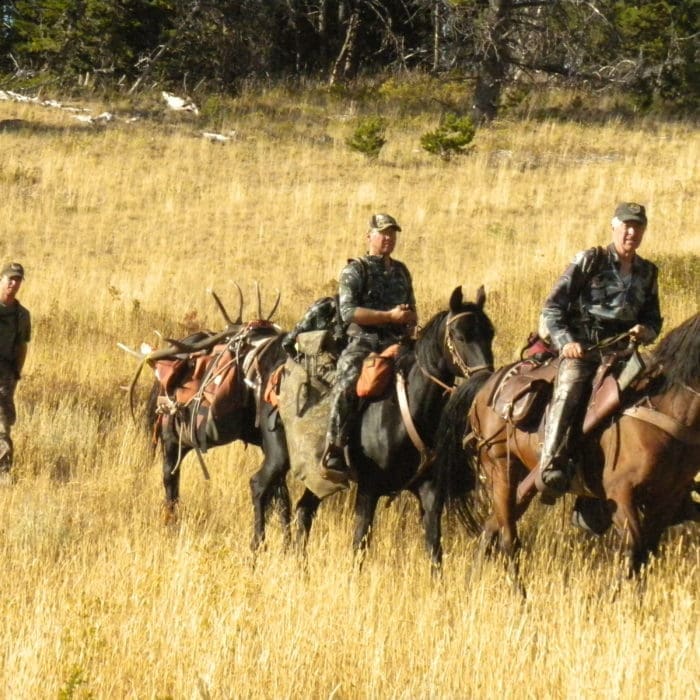
Registered camps in an outfitter guide permit area are critical to most outfitter operations. These camps provide better client satisfaction and provide useful information for the non-outfitted public. Because of congestion that can result, the USFS doesn’t mix camp locations among outfitted and the non-outfitted public.
If you wish to hunt an area assigned to an outfitter, a good practice it to attempt to avoid the outfitter’s camps and primary use areas. In order to do this, you need to know where these camps are located. Base camps are easy to find and since there is usually a lot of traffic into and out of these areas, I do everything I can to avoid them.
Spike camps may not be so easy to locate, but the outfitter is required to register each of these camps with the Forest Service. Most USFS regional offices will provide you with this info, but I’ve found some instances where you may have to file a freedom of information act (FOIA) request.
FOIA requests may be made for any reason whatsoever, with no showing of relevancy required. The purpose for which spike camp records are sought has no bearing upon the merits of the request. Requests for info contained in an outfitter guide permit should be filed through the Forest FOIA coordinator in the area where the guide is operating. Acknowledgment of an FOIA request must be made within ten working days. See also: Freedom of Information Act and/or the Privacy Act. FSH 6209.11.
Another means of giving an outfitter “space” is to locate your campsite between two outfitter areas, perhaps midway between their base camps. Often, this will put you in more remote areas with better game and less pressure as well.
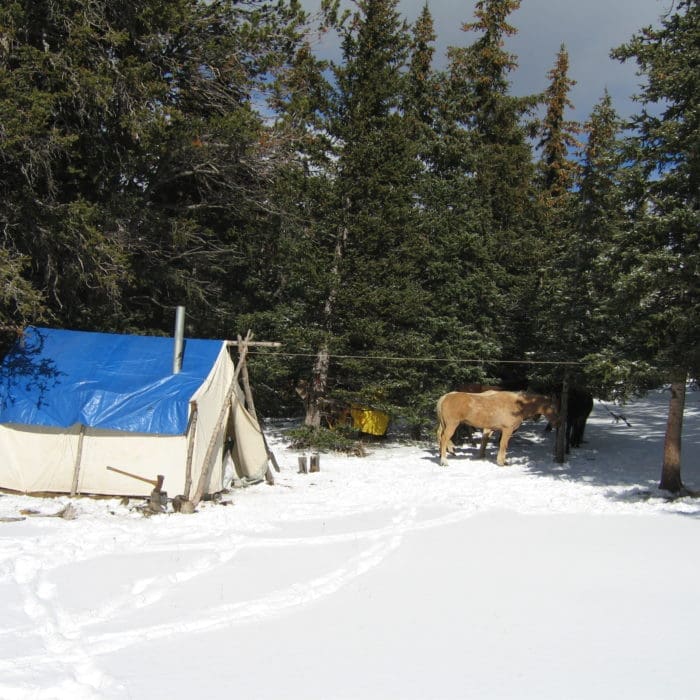
Creating peace and harmony among all forest users is the goal of USFS forest plans. Creating equitable use opportunities for outfitters and non-outfitted DIY hunters is a key part of this equation. When a DIY hunter encounters problematic situations with outfitters or their camps, the following forest rules may be helpful in resolving issues and conflicts:
- The outfitter is responsible for cleanup of all camps assigned to that outfitter.
- Forest Plans usually establish the minimum distance outfitter camps should be located from established trails and water sources.
- Water sources are particularly important and outfitter campsites should be held to the minimum needed and should not monopolize scarce water sources also needed by non-outfitted public.
- Permits or outfitter operating plans must specify each structure allowed at each campsite.
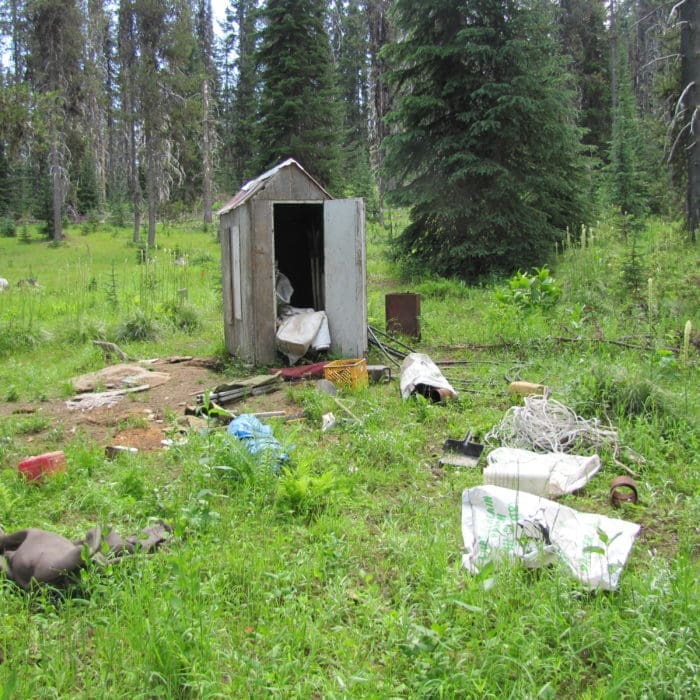
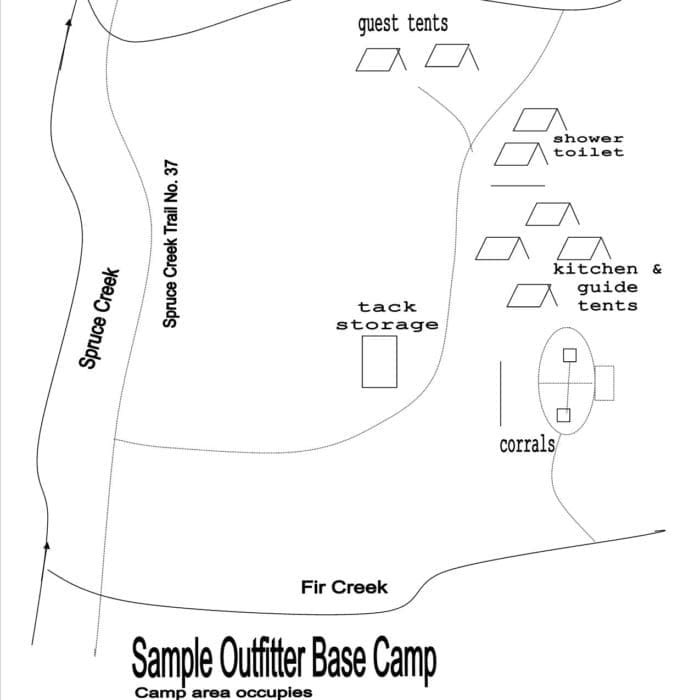
Getting to Know Your Neighbor
When possible, it’s a good practice to get to know the outfitter in the area you’re hunting or plan to hunt. You’ll often encounter him or his packers, guides, cooks, etc. on the trail or at the trailhead. A little bit of good will goes a long way. A letter or email to an outfitter could be a good gesture for the DIY hunting horseman who wants to initiate a positive relationship. If you make such a gesture and it is received positively, it could pave the way to assist each other in cases of emergency or simply good neighbor acts of kindness that require nothing in return.
Be a Good Neighbor
Following the laws and having good ethics in the backcountry are the basis for any relationship with other DIY hunters, outfitters, or their clients. I often look for ways to be a good neighbor, such as a few years ago when I encountered one of the young guides who had been bringing hunters in on top of our Idaho camp.
On this particular morning, I dropped down off the mountain in the dark in order to be in a strategic location where a great bull elk had been feeding the night before. When I reached the location and it became daylight, it was obvious the bull had moved on. I stayed there for some time and heard someone talking. One of the guides and a client were coming down the ridge behind me. I said, “Hello!”
The guide ignored me, but his client seemed like a nice guy. I inquired about the cut over his right eye and he told me he had shot a mule deer buck a few days prior. He went on to tell me this was his first trip out West and he had “scoped” himself with his new rifle. I had other places to check out on the mountainside that morning, so I told him, “This is your first trip, so you should enjoy yourself. I’ll leave this spot to you and go on down the ridge to another area.”
Later, the client encountered one of my hunting partners and asked if that “older gentleman” that he had seen “way down in the hole” was one of his party. When my hunting partner told him that indeed I was his hunting partner, the client responded, “That guy is a gentleman and a scholar!”
A little bit of good will goes a long way! Hopefully, the “best practices” I’ve used over the years will be helpful to you in your own adventures afield, whether hunting in an area with an outfitter or not.




